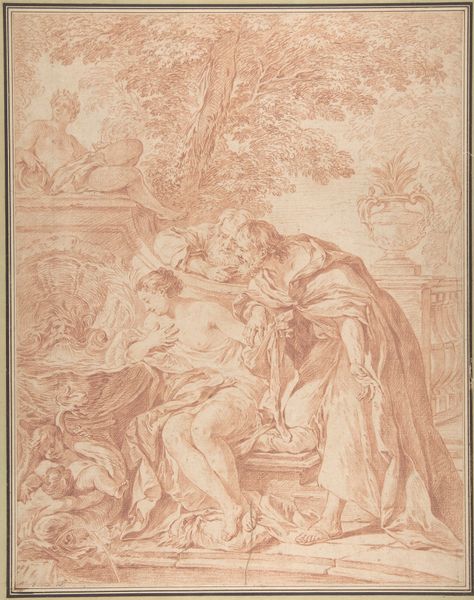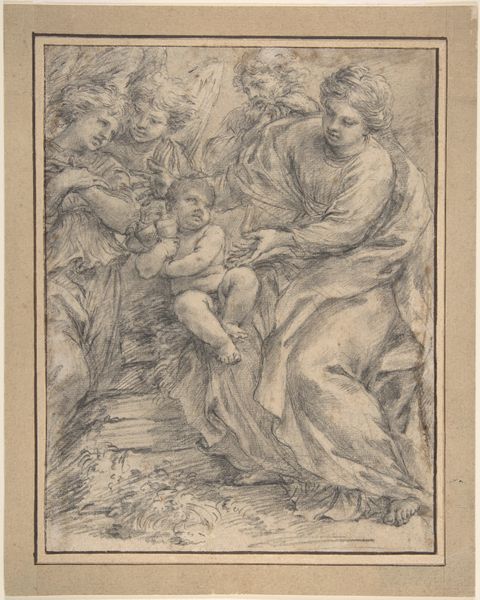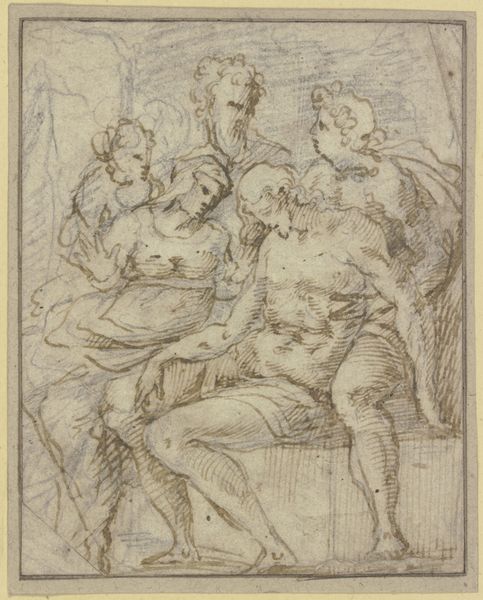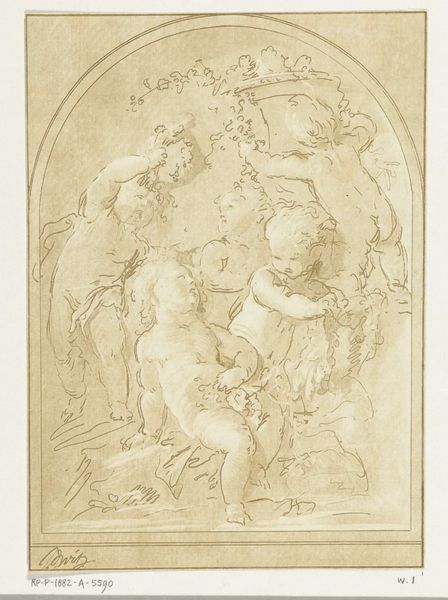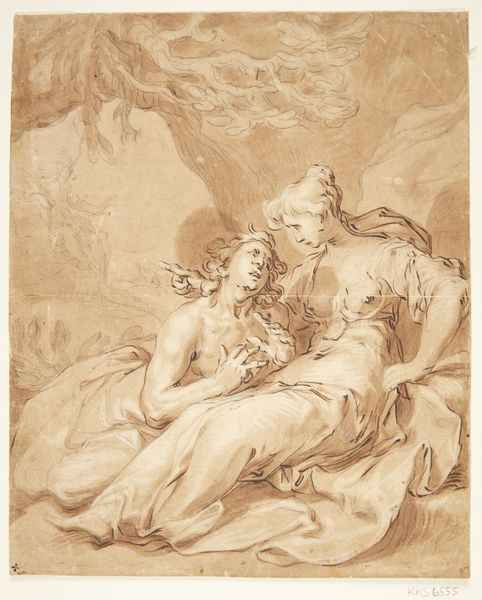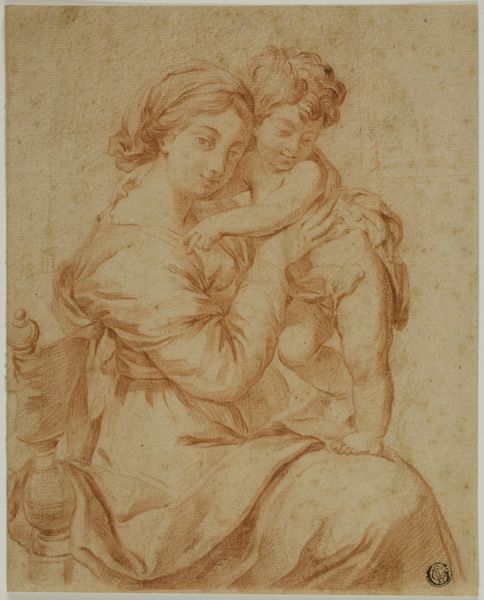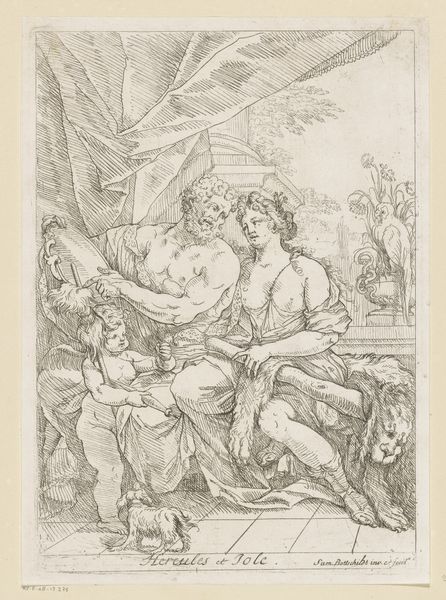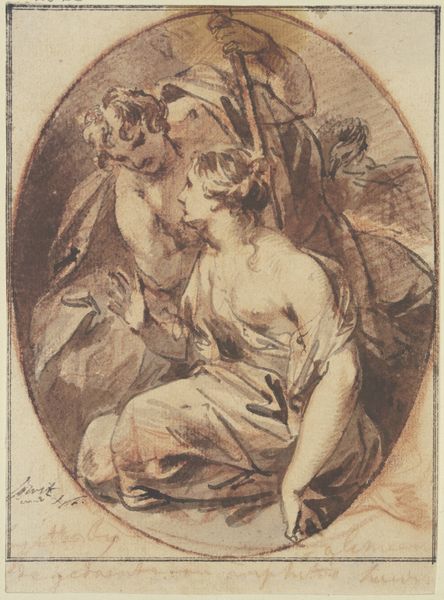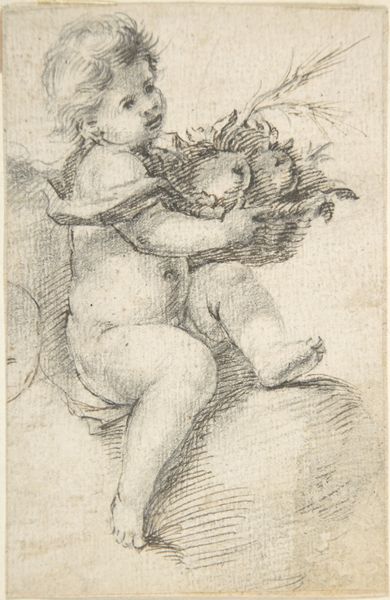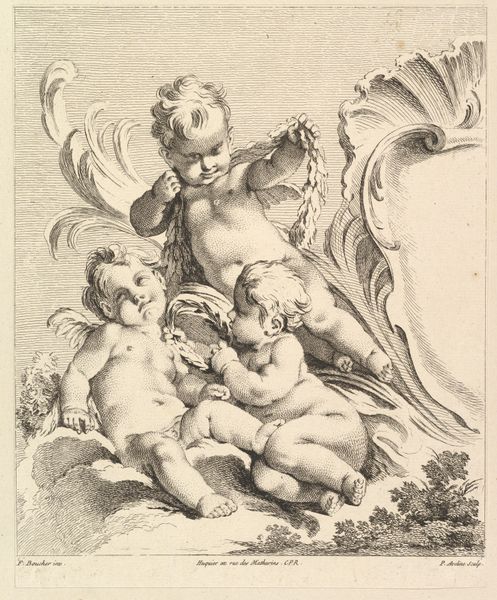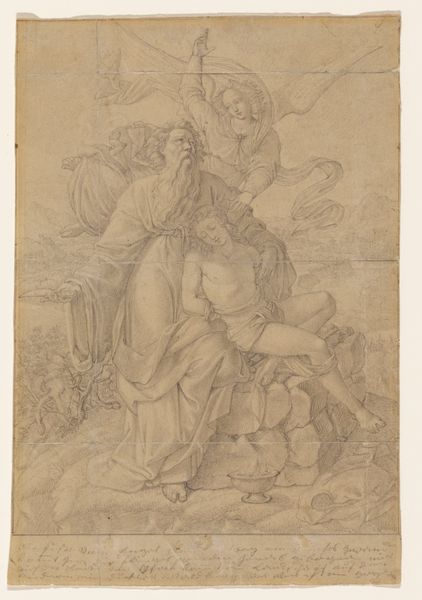
drawing
#
drawing
#
baroque
#
figuration
#
history-painting
Copyright: Public Domain
Curator: Here we have a red chalk drawing entitled "Holy Family." Jacob de Wit is credited as the artist, and the artwork is a highlight from our Baroque collection. Editor: What strikes me immediately is the intimacy. Even though it depicts such a grand theme, there’s something incredibly tender about the figures. Curator: Indeed. De Wit's Baroque style here feels less about ornate display and more focused on human emotion and the depiction of fabric, note for example, the soft drapes and folds around Mary. Consider also the context of drawing as a preparatory stage. This may be a study for a larger painting or fresco. The sketch-like quality gives it a sense of immediacy and process. Editor: Exactly! The red chalk gives it such a warmth, a feeling of blood coursing through veins. You can almost see the artist’s hand moving across the paper. There's a vitality despite the classical subject matter. And those cherubs floating above – they add this light, ethereal touch that prevents the whole scene from feeling too earthbound. Curator: Think too about the labor involved in procuring and processing the red chalk itself; the mining, the grinding, the binding. The final artwork reflects all those material origins and processes. Editor: Oh, absolutely. Every mark is a testament to effort, intention and physical transformation of raw materials. It all adds layers to how we receive an image, right? What begins with a stone pulled from the earth eventually manifests as an expression of tenderness. Curator: A connection between divine narratives and the materials of their telling. Thank you for your insights! Editor: My pleasure! It's moments like these that help us truly appreciate the beauty in artistic ingenuity, regardless of theme or style.
Comments
No comments
Be the first to comment and join the conversation on the ultimate creative platform.

